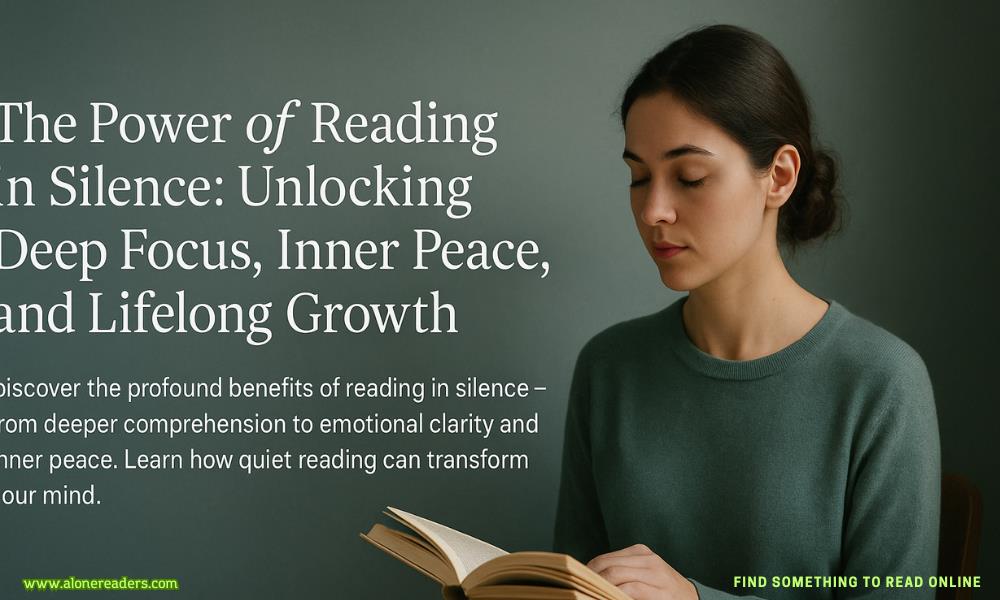
Reading in silence has long been a practice cherished by scholars, thinkers, and everyday readers alike. In a world increasingly dominated by noise, screens, and constant distraction, the simple act of opening a book in a quiet space offers something deeply grounding and powerful. It is more than just a method of consuming information — it is a meditative ritual, a portal to self-reflection, a tool for intellectual development, and a source of emotional healing. The power of reading in silence lies in its ability to help us connect with both the text and ourselves on a deeper level, unhindered by external interference.
When we read in silence, our minds are given the space to fully absorb and process what we’re taking in. Unlike reading aloud or engaging in discussions while reading, silent reading allows for a kind of cognitive immersion. It encourages internal dialogue, sparks imagination, and fosters undisturbed concentration. The words on the page resonate more intimately with our thoughts, forming a direct connection between author and reader that is intensely personal. In this space, we’re free to visualize, interpret, and pause when needed — making silent reading a highly customizable and reflective experience.
In educational settings, silent reading has long been encouraged for improving comprehension. Without the pressure of performance or vocalization, readers—especially young learners—can focus solely on understanding the material. Silent reading trains the brain to track meaning, infer context, and build vocabulary without overt guidance. It’s an exercise in independence. And for adults, reading quietly becomes not only a method of learning but also a form of mental rejuvenation. The calm created by silent reading enhances memory retention, lowers stress levels, and invites a state of mindfulness that is increasingly rare in the digital age.
There is also an emotional and spiritual element to reading in silence. It provides a safe sanctuary for the heart and mind. The solitude of quiet reading encourages introspection — it allows us to examine our own beliefs, fears, and aspirations through the lens of the characters and stories we encounter. Many readers find comfort in this silence, especially during times of grief, anxiety, or uncertainty. It becomes a quiet companion in solitude, helping us to process difficult emotions without the need for words exchanged aloud.
In religious and philosophical traditions, silent reading has often been revered as a sacred practice. Scriptures, meditative texts, and spiritual literature are typically read in silence not just for respect, but to allow the words to echo in the soul. This reinforces the idea that silence amplifies meaning — not in volume but in depth. The absence of sound creates an internal resonance where understanding goes beyond intellect and begins to stir something more profound within us. In this silence, we don’t just read the text — we experience it.
The modern world, however, poses significant challenges to silent reading. Constant notifications, background noise, and the addictive pull of digital media can make focused reading feel like a luxury. But precisely because of this, making space for quiet reading is more important than ever. It is an act of resistance against the chaos. It’s a declaration that your attention, your time, and your mental clarity are worth protecting. Even just fifteen minutes a day spent reading in silence can offer measurable benefits for mental health, cognitive sharpness, and emotional balance.
For those who have never cultivated a silent reading habit, the first steps are simple but intentional. It begins by carving out a quiet corner, away from distractions. This could be a cozy spot at home, a secluded park bench, or a quiet reading nook at the library. The choice of material matters too — books that genuinely engage the mind or uplift the spirit tend to hold attention more naturally. Gradually, this practice of reading in silence becomes a habit, then a refuge, and ultimately, a way of life.
It’s also important to note that silent reading nurtures empathy. When reading fiction especially, we walk in the shoes of others, living their joys and sorrows. In the silence, we’re more receptive to those emotional currents. We pause and reflect. We feel without the distraction of dialogue or commentary. Studies have shown that regular readers of fiction tend to be more empathetic, and silent reading likely intensifies this effect by fostering undiluted connection with characters and narrative arcs.
Furthermore, silent reading is an essential skill for critical thinking. It requires one to evaluate arguments, detect biases, and draw conclusions independently. Unlike video or audio, reading a text silently invites analytical pause — moments where the reader can question, dissect, or ponder. This kind of active mental engagement is at the heart of intellectual maturity. Whether reading philosophy, science, history, or literature, the quiet contemplation involved in silent reading equips the reader with tools to think deeply, argue thoughtfully, and learn continuously.
For writers, thinkers, and creatives, reading in silence is also a source of inspiration. It fuels the imagination and sharpens expression. Many great authors have spoken about how their best ideas came not in conversation but in moments of silent reading. The mind, no longer bombarded by the noise of the world, begins to generate original thought. Ideas that had been lingering below the surface emerge, patterns become clearer, and new creative paths unfold. The silence acts as a canvas on which thoughts are painted with clarity and purpose.
In the end, the power of reading in silence lies in what it allows us to reclaim — focus, peace, depth, and imagination. It is a form of nourishment for the inner world, one that does not shout but whispers its way into our understanding. While society races forward in a blur of information overload, the silent reader remains rooted — calm, thoughtful, and transformed with every page turned in quietude. To read in silence is to engage not just with the written word, but with ourselves, in the most profound and human of ways.